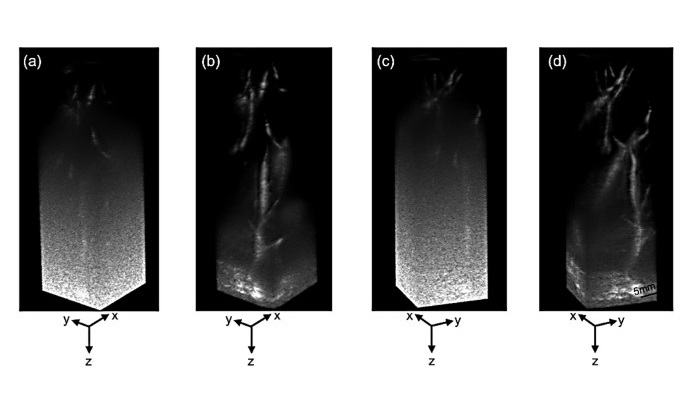Tiny Magnetic Robot Takes 3D Scans from Deep Within Body
Posted on 28 Mar 2025
Colorectal cancer ranks as one of the leading causes of cancer-related mortality worldwide. However, when detected early, it is highly treatable. Now, a new minimally invasive technique could significantly enhance early detection and, in the future, enable targeted ultrasound-triggered drug delivery for more effective treatment.
A research team led by engineers from the University of Leeds (West Yorkshire, UK) has created a small magnetic robot capable of performing 3D scans deep within the body, marking a major advancement in early cancer detection. This groundbreaking technology, developed by a collaborative team of engineers, scientists, and clinicians, marks the first time that high-resolution 3D ultrasound images have been generated from a probe inside the gastrointestinal tract, or gut. This innovation has the potential to revolutionize cancer diagnosis and treatment by enabling 'virtual biopsies.' These non-invasive scans provide immediate diagnostic results, allowing for the detection, staging, and possibly treatment of lesions in a single procedure, removing the need for traditional biopsies. A surprising element behind the team’s success was the use of a lesser-known 3D shape called the oloid, which provided the magnetic medical robot with an unprecedented range of motion—specifically, the roll—crucial for accurate navigation and imaging inside the body.

In their paper published in Science Robotics, the team described how they integrated the oloid shape and its unique rolling motion into a new magnetic flexible endoscope (MFE). They outfitted the endoscope with a small, high-frequency imaging device capable of capturing detailed 3D images of internal tissues. This imaging device, a 28 MHz micro-ultrasound array, creates a high-resolution 3D reconstruction of the scanned area. From this virtual model, clinicians can generate cross-sectional images that replicate those produced by traditional biopsies, where tissue is sliced into thin layers and examined under a microscope. The high-frequency ultrasound used in this study differs from the standard ultrasound most people are familiar with, such as those used in fetal or organ imaging. The high-frequency ultrasound probe in this study allows for viewing features at a microscopic level, providing detailed tissue layer information. While 3D ultrasound is already possible in blood vessels and the rectum, this work extends the possibility of performing 3D scans deeper within the gastrointestinal tract.
“By combining our advanced robotics with medical ultrasound imaging, we take this innovation one step ahead of traditional colonoscopy, allowing doctors to diagnose and treat in a single procedure — eliminating the wait between diagnosis and intervention,” said postgraduate researcher Nikita Greenidge, a member of Leeds’ STORM Lab, in the School of Electronic and Electrical Engineering, and lead author of the paper. “This not only makes the process more comfortable for patients but also reduces waiting times, minimizes repeat procedures, and alleviates the anxiety of waiting for potential cancer results.”














